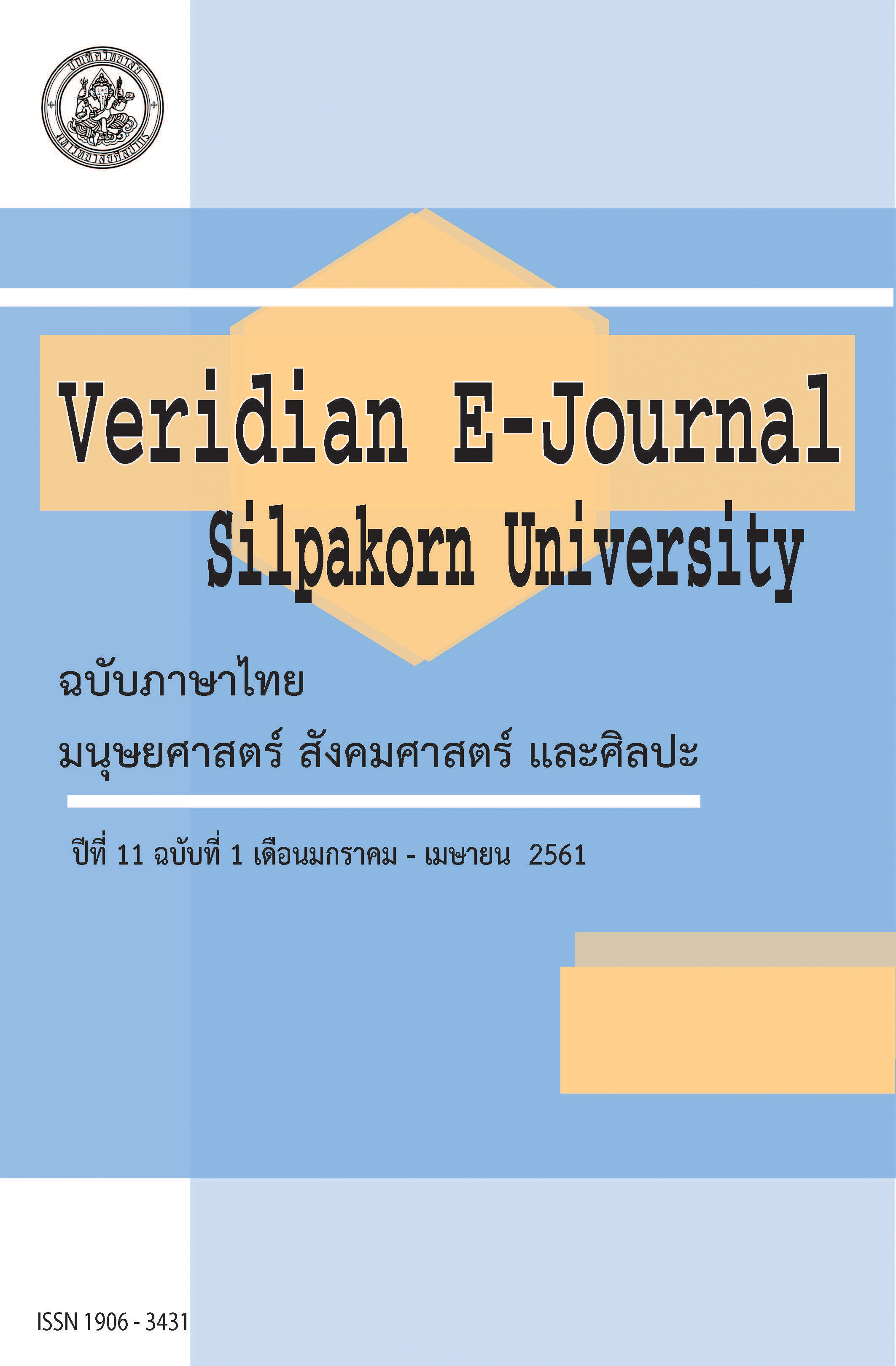การพัฒนารูปแบบการป้องกันการข่มเหงรังแกในโรงเรียน (A Development of Bullying Prevention in School Model)
Main Article Content
Abstract
การวิจัยนี้มีวัตถุประสงค์ เพื่อพัฒนารูปแบบการป้องกันการข่มเหงรังแกในโรงเรียน และเพื่อประเมินการทดลองใช้รูปแบบการป้องกันการข่มเหงรังแกในโรงเรียน วิธีดำเนินการวิจัยแบ่งออกเป็น 2 ระยะ คือ ระยะที่ 1 การพัฒนารูปแบบการป้องกันการข่มเหงรังแกในโรงเรียน โดยมีขั้นตอน 2 ขั้นตอน คือขั้นตอนที่ 1 การสร้างแบบคัดกรองการข่มเหงรังแกในโรงเรียน กับนักเรียนระดับประถมศึกษาตอนปลายและนักเรียนระดับมัธยมศึกษาตอนต้น ในสังกัดสำนักงานคณะกรรมการการศึกษาขั้นพื้นฐาน 4 ภูมิภาค คือภาคเหนือ ภาคกลาง ภาคตะวันออกเฉียงเหนือ และภาคใต้ จำนวน 2,402 คน ได้มาจากการสุ่มแบบหลายขั้นตอน และขั้นตอนที่ 2 การสร้างรูปแบบการป้องกันการข่มเหงรังแกในโรงเรียน มี 3 รูปแบบได้แก่ การให้คำปรึกษากลุ่มเพื่อลดการข่มเหงรังแกผู้อื่น การให้คำปรึกษากลุ่มเพื่อป้องกันการถูกข่มเหงรังแก และการให้คำปรึกษากลุ่มเพื่อหลีกเลี่ยงสถานการณ์การข่มเหงรังแก ระยะที่ 2 การประเมินการทดลองใช้รูปแบบการป้องกันการข่มเหงรังแกในโรงเรียน โดยใช้แบบแผนการทดลองแบบ One group Pre-test Post-test Design กับนักเรียนระดับชั้นประถมศึกษาตอนปลายและนักเรียนระดับมัธยมศึกษาตอนต้นจำนวน 3 กลุ่ม โดยการเลือกแบบเจาะจง และมีความสมัครใจเข้ากลุ่มการให้คำปรึกษา คือกลุ่มที่เข้าร่วมการให้คำปรึกษากลุ่มเพื่อลดการข่มเหงรังแกผู้อื่น จำนวน 10 คน กลุ่มที่เข้าร่วมการให้คำปรึกษากลุ่มเพื่อป้องกันการข่มเหงรังแก จำนวน 11 คน และกลุ่มที่เข้าร่วมการให้คำปรึกษาเพื่อหลีกเลี่ยงสถานการณ์การข่มเหงรังแก จำนวน 11 คน วิเคราะห์ข้อมูลด้วยสถิติพื้นฐานและการวิเคราะห์การเปรียบเทียบความแตกต่างของค่าเฉลี่ยแบบไม่เป็นอิสระจากกัน (t-test for Dependent Samples)
ผลการวิจัยสรุปได้ดังนี้
- การพัฒนารูปแบบการป้องกันการข่มเหงรังแกในโรงเรียน ประกอบด้วยการสร้างแบบคัดกรองนักเรียนเพื่อใช้คัดกรองการข่มเหงรังแก คัดกรองการถูกข่มเหงรังแก และคัดกรองการเห็นเหตุการณ์การข่มเหงรังแก แล้วแบ่งนักเรียนออกเป็น 3 กลุ่มเพื่อเข้าร่วมรูปแบบการป้องกันตนเองจากการข่มเหงรังแก โดยการให้คำปรึกษากลุ่มที่มี 3 ขั้นตอนคือ ขั้นเริ่มต้นกลุ่ม ขั้นทำงาน และขั้นยุติกลุ่ม โดยแบ่งออกเป็น 3 กลุ่ม คือ การให้คำปรึกษากลุ่มเพื่อลดการข่มเหงรังแกผู้อื่น การให้คำปรึกษากลุ่มเพื่อป้องกันการถูกข่มเหงรังแก และการให้คำปรึกษากลุ่มเพื่อหลีกเลี่ยงสถานการณ์การข่มเหงรังแก
- การประเมินการทดลองใช้รูปแบบการป้องกันการข่มเหงรังแกในโรงเรียน พบว่า
2.1 นักเรียนชั้นประถมศึกษาและชั้นมัธยมศึกษาตอนต้นที่ข่มเหงรังแก หลังจากการเข้าร่วมการให้คำปรึกษากลุ่ม มีคะแนนเฉลี่ยการข่มเหงรังแกลดลงจากก่อนการเข้าร่วมการให้คำปรึกษากลุ่มอย่างมีนัยสำคัญทางสถิติที่ระดับ.05 แสดงให้เห็นว่า การให้คำปรึกษากลุ่มสามารถช่วยลดการข่มเหงรังแกของนักเรียนได้
2.2 นักเรียนที่ถูกข่มเหงรังแก หลังจากการเข้าร่วมการให้คำปรึกษากลุ่ม มีคะแนนเฉลี่ยการถูกข่มเหงรังแกลดลงจากก่อนเข้าร่วมการให้คำปรึกษากลุ่มอย่างมีนัยสำคัญทางสถิติที่ระดับ .05 แสดงให้เห็นว่า การให้คำปรึกษากลุ่มช่วยให้นักเรียนมีการป้องกันตนเองจากการถูกข่มเหงรังแกได้
2.3 นักเรียนที่เห็นเหตุการณ์การข่มเหงรังแก หลังจากการเข้าร่วมการให้คำปรึกษากลุ่มมีคะแนนเฉลี่ยการเห็นเหตุการณ์การข่มเหงรังแกลดลงจากก่อนการเข้าร่วมการให้คำปรึกษากลุ่มอย่างมีนัยสำคัญทางสถิติที่ระดับ .05 แสดงให้เห็นว่า การให้คำปรึกษากลุ่มช่วยให้นักเรียนหลีกเลี่ยงสถานการณ์การข่มเหงรังแกได้ดีขึ้น
The purposes of this research were to develop the model for bullying prevention in schools and to assess the model for bullying prevention in schools. The research procedure consisted of 2 phases. Phase I: Developing the model for bullying prevention in school consisted of 2 stages; stage 1: a construction of screening inventory for bullying in schools (the sample were 2,402 students in grade 4 to 9 under the Office of the Basic Education Commission in 4 regions, Northern, Central, Northeastern, and Southern, by using the multi-stage sampling method); stage 2: a construction of model of bullying prevention in schools included group counseling for reducing the bullying behavior, group counseling for preventing from bullying, and group counseling for avoiding the bullying situation. And Phase II : Assessing the model of bullying prevention in schools by applying the one group pretest-posttest experiment design to 3 groups of students in grade 7 to 9 included group counseling for reducing the bullying behavior, group counseling for preventing from bullying, and group counseling for avoiding the bullying situation. Each group consisted of 10-11 students. The data were analyzed using descriptive statistics and t-test for dependent samples.
The results were as follows:
- Developing the model for bullying prevention in schools consisted of the bullying screening inventory, the victim screening inventory, and the bystander screening inventory. Students were screened into 3 groups to participate the bullying prevention model through group counseling consisted of three stages: initial stage, working stage, and final stage. These three groups were a construction of model of bullying prevention in schools included group counseling for reducing the bullying behavior, group counseling for preventing from bullying, and group counseling for avoiding the bullying situation.
- Assessing the model for bullying prevention in schools found that:
2.1 Students in both elementary and secondary levels having the bully behaviors had the bullying mean score before and after participated in group counseling were different with the statistical significance level of 0.05. This result indicated that group counseling model could reduce the students’ bullying behaviors.
2.2 Students being the victims had the victim mean score before and after participated in group counseling were different with the statistical significance level of 0.05. This result indicated that group counseling model could increase students’ self-prevention from bullying.
2.3 Students being the bystanders had the victim mean score before and after participated in group counseling were different with the statistical significance level of 0.05.This result indicated that group counseling model could help students to avoid the bullying situation.
